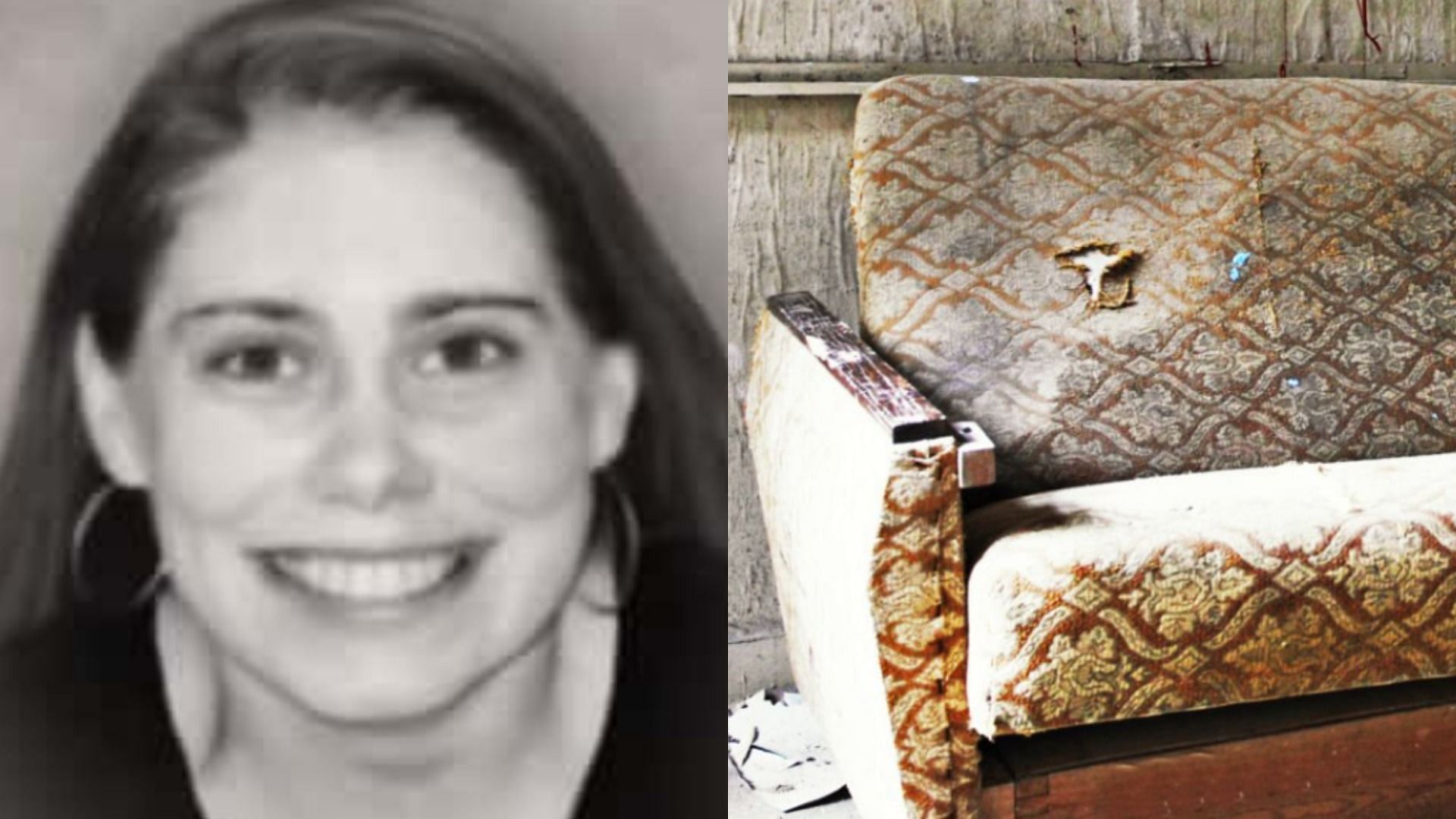The story of Lacey Fletcher is, to be honest, a deeply unsettling one that has captured the attention of many people around the world. It is, you know, a very sad account of severe neglect, leading to an almost unimaginable outcome. When police officers arrived at a home on Tom Drive in Slaughter, Louisiana, on January 3, 2022, they made a discovery that would shock even seasoned professionals. Lacey Fletcher, a 36-year-old woman, was found dead, tragically described as having "melted" into a sofa, a scene that, quite frankly, paints a picture of prolonged suffering.
This particular case truly brings to light the very real and heartbreaking consequences of extreme neglect, especially for those who might be vulnerable. It's a situation that, you know, makes you stop and think about how something like this could ever come to pass. The details that emerged from the investigation are, in a way, incredibly difficult to process, showing a life lived in conditions that are, frankly, beyond belief.
The sheer scale of the suffering Lacey endured, as described by those who encountered the scene, is something that, in some respects, seems almost impossible to comprehend. This article will, you know, try to lay out the known facts of the Lacey Fletcher case, looking at her background, the horrifying circumstances of her discovery, and the legal actions that followed, all based on the information that has been made public.
Table of Contents
- Who Was Lacey Fletcher?
- Personal Details and Background
- The Horrifying Discovery
- A Decade of Suffering: The Unimaginable Agony
- The Legal Proceedings: Parents on Trial
- Public Outcry and Calls for Transparency
- Understanding the Context: Mental Illness and Neglect
- Frequently Asked Questions About Lacey Fletcher
Who Was Lacey Fletcher?
Lacey Fletcher was, you know, a woman whose life, in its final years, became a profound tragedy. Documents obtained by dailymail.com revealed that Lacey had, in fact, been autistic. This detail, you know, provides some context to her personal struggles. She also, apparently, experienced extreme agoraphobia, which is a very strong fear of going outside. This condition, combined with some form of autism spectrum disorder, really shaped her daily existence. It's almost, you know, as if these conditions created a barrier between her and the outside world, making it incredibly hard for her to leave her home.
It was also noted that Lacey had, in some respects, social anxiety. This, too, would fit in with her reported agoraphobia, making interactions and even the thought of leaving the house a source of significant distress. One can only imagine the constant struggle of feeling like you had to, perhaps, balance on a bed to avoid falling off, a feeling of anxiety even when trying to rest. This level of anxiety, you know, is quite different from what many people experience in their daily lives, suggesting a deep internal struggle that, frankly, was always present for her.
For a long time, Lacey was, you know, confined to the sofa where she was eventually found. Despite her severe physical decline, there are indications that she had, in fact, been eating and drinking to survive in that state for over a decade. There were even, allegedly, reports of her emailing friends from the couch when she was 27 years old. This suggests that, at some point, she was still able to communicate, even if her physical state was already deteriorating. The possibility that she may have been catatonic has also been raised, a state where a person can be unresponsive and seemingly unaware of their surroundings, yet still alive. This, too, paints a very complex picture of her final years.
Personal Details and Background
| Detail | Information |
|---|---|
| Name | Lacey Ellen Fletcher |
| Age at Death | 36 years old |
| Date of Death | Monday, January 3, 2022 |
| Location of Death | Parents' home, Tom Drive, Slaughter, Louisiana |
| Reported Conditions | Autism Spectrum Disorder, Extreme Agoraphobia, Social Anxiety, possibly Catatonic |
| Cause of Death | Severe medical neglect (leading to complications like chronic malnutrition, acute ulcerations, osteomyelitis, sepsis) |
| Parents | Sheila and Clay Fletcher |
The Horrifying Discovery
The scene that greeted Slaughter police officers on January 3, 2022, was, you know, truly beyond words. After a call about an unresponsive person at the home, officers found Lacey Fletcher dead on her parents’ 1960s-era couch. The description of her body was, frankly, shocking: she was found "melted" into the sofa, a term that, you know, conveys the extent of her physical decay and fusion with the furniture. It was a sight that, in some respects, indicated a very long period of immobility and neglect.
Ewell Bickham, the coroner who examined Lacey, described her as "extremely dirty," with hair that was "matted/knotted" and covered in feces and maggots. This, you know, really paints a grim picture of the conditions she was living in. There were, apparently, visible signs of severe neglect, including sores and bone visible from her body, suggesting deep, unaddressed wounds. The presence of maggots and feces further emphasized the lack of care she received, a situation that, quite frankly, is hard to fathom.
The medical expert who saw her also noted "insect bites to her left ear, face, and arms." These bites, too, were not recent; they had, in fact, happened before her death, adding another layer of suffering to her final days. The coroner, Ewell Bickham, later expressed a desire for the graphic photos of Lacey Fletcher to be shown to the public. He felt, you know, that people needed to see the full extent of the tragedy to truly grasp what had occurred, hoping, perhaps, that such a stark visual might prevent similar situations in the future. It's a very strong statement from someone who witnessed the scene firsthand.
A Decade of Suffering: The Unimaginable Agony
The most heartbreaking aspect of the Lacey Fletcher case, in a way, is the sheer duration of her suffering. It's believed that she endured her horrific conditions for over a decade, a period of time that, frankly, seems almost impossible for a human being to survive in such a state. The thought of the "mental and physical agony" that Lacey went through over such a horrifying amount of time is, you know, truly difficult to comprehend. If there ever was a hell, Lacey Fletcher, apparently, endured it to its full and most powerful extent, a sentiment expressed by those close to the investigation.
Despite the incredibly poor conditions she was found in, Lacey had to have been, you know, eating and drinking in order to survive for so long. This suggests some level of interaction, however minimal, during that decade. The fact that she was, allegedly, emailing friends from the couch when she was 27 years old also points to a period where she maintained some connection to the outside world, even while her physical health was, perhaps, already declining significantly. This, too, makes the later complete deterioration of her care even more puzzling and, frankly, devastating.
The possibility that Lacey may have been catatonic for a significant portion of this time is, you know, a very important detail. A catatonic state could explain her extreme immobility and inability to care for herself, making her entirely dependent on others. However, even in a catatonic state, basic human needs for hygiene, nutrition, and medical attention remain. The complete absence of these necessities for such a prolonged period, resulting in her body "melting" into the sofa, bone visible, and covered in filth, speaks to an extreme level of neglect that, frankly, is beyond words. It's a scenario that, you know, truly tests one's understanding of human compassion and responsibility.
The Legal Proceedings: Parents on Trial
The parents of Lacey Fletcher, Sheila and Clay Fletcher, were, you know, eventually charged in connection with their daughter's death. They were, in fact, expected to stand trial for manslaughter. This legal process brought the horrific details of Lacey's final years into the public sphere even more. In a significant development, the parents of Lacey Fletcher, the woman found "melted" to the couch, pleaded no contest to manslaughter. This decision, you know, meant they did not admit guilt but accepted the conviction, avoiding a full trial.
Documents obtained by dailymail.com reveal that, as part of the legal proceedings, the autistic Lacey had, in fact, bone visible from her body, a detail that was, frankly, incredibly impactful in court. The couple, in their statement, maintained that they loved Lacey "to death" and claimed they did everything they could to help her. This statement, you know, stands in stark contrast to the evidence of severe neglect presented by the authorities and medical experts. It’s a very difficult claim to reconcile with the tragic findings at their home.
Ultimately, Lacey Fletcher’s parents were sentenced to 40 years for the manslaughter of their daughter. This sentence, you know, reflects the gravity of the crime and the profound suffering Lacey endured. The legal outcome, while bringing some measure of justice, still leaves many questions about how such a situation could persist for so long without intervention. It's a case that, in some respects, highlights the critical importance of recognizing and addressing signs of severe neglect, especially when vulnerable individuals are involved. Learn more about vulnerable person care on our site.
Public Outcry and Calls for Transparency
The Lacey Fletcher case, you know, understandably sparked a significant public outcry. When people first read about the case, many, frankly, found it incredibly difficult to believe the details. It is, in fact, an extremely gross and sad story, as many have warned. The sheer horror of Lacey's living conditions and the extent of her suffering resonated deeply with people, prompting widespread shock and sadness across communities. It's a situation that, you know, truly makes you question the boundaries of human endurance and neglect.
Ewell Bickham, the coroner who examined Lacey, made a very strong statement by wanting the graphic photos of Fletcher shown to the public. His reasoning was that people needed to see the full, unvarnished truth of what happened to Lacey. This call for transparency, you know, was aimed at ensuring that the public understood the severity of the neglect and, perhaps, to serve as a stark warning. He believed that such a visual would truly convey the message that "if there ever was a hell, Lacey Fletcher endured it." This, too, is a powerful plea for awareness and accountability.
There have been, in fact, discussions and posts pointing out that some things about the case don't quite add up for some observers, leading to ongoing conversations. The case has, you know, become a focal point for discussions about severe neglect, the responsibilities of caregivers, and the often-hidden struggles of individuals with profound mental and physical health challenges. It's a story that, frankly, compels us to look closer at the well-being of those around us, especially those who may not be able to advocate for themselves. This case, in some respects, really underlines the need for community vigilance.
Understanding the Context: Mental Illness and Neglect
The Lacey Fletcher case, in a way, brings to the forefront the very difficult and often hidden issues surrounding severe mental illness and neglect within homes. It's a topic that, you know, can be incredibly sensitive and complex. For instance, someone might have had a mentally ill mother who, perhaps, tried to hobble them so they would never leave home, creating a situation where, at 18, they didn't even know how to boil a pot of water because they were punished for using the kitchen. This personal experience, you know, illustrates how deeply controlling and debilitating such environments can become, making a person utterly dependent and isolated.
While every situation is unique, Lacey's extreme agoraphobia and autism spectrum disorder made her, in some respects, incredibly vulnerable. Her inability to leave the house, combined with what appears to be a profound lack of care, created a tragic scenario. It makes you think about how individuals with such significant challenges rely entirely on their caregivers for basic needs, and what happens when that care is, frankly, completely absent. This, too, highlights the silent struggles that can occur behind closed doors, often unnoticed by the outside world.
The case of Lacey Fletcher is, you know, a stark reminder of the responsibilities we have towards the most vulnerable members of our society. It compels us to consider the signs of severe neglect and how crucial it is for communities and support systems to be aware and, perhaps, to intervene when necessary. It's a very difficult story, but one that, frankly, underscores the importance of compassion, vigilance, and ensuring that no one is left to suffer in such unimaginable conditions. You can find more related information on our page about care and support.
Frequently Asked Questions About Lacey Fletcher
What were the conditions Lacey Fletcher was found in?
Lacey Fletcher was, you know, found dead on her parents’ sofa, described as having "melted" into it. Her body was, frankly, covered in feces and maggots, with matted hair. She had, in fact, visible sores, and bone was apparent from her body. There were also, apparently, insect bites on her ear, face, and arms, indicating a prolonged period of neglect.
What was Lacey Fletcher's medical condition?
Lacey Fletcher was, you know, autistic and suffered from extreme agoraphobia, a severe fear of going outside. She also had, in some respects, social anxiety. It was also suggested that she may have been catatonic, which would explain her inability to move or care for herself over a long period.
What happened to Lacey Fletcher's parents?
Lacey Fletcher's parents, Sheila and Clay Fletcher, pleaded no contest to manslaughter in connection with their daughter's death. They were, in fact, sentenced to 40 years for the manslaughter of Lacey. They maintained that they loved her and did everything they could, a claim that, frankly, was not supported by the evidence of her condition.



Detail Author:
- Name : Dr. Jayce Bashirian I
- Username : vcartwright
- Email : amiya63@carroll.info
- Birthdate : 2007-03-19
- Address : 716 Prohaska Camp Apt. 667 Darylfurt, TN 59224-0247
- Phone : 1-813-798-7942
- Company : Barrows Group
- Job : CTO
- Bio : Possimus quas quas at et reprehenderit. Illum sit facere animi praesentium perspiciatis. Nihil voluptatum blanditiis alias amet. Aut voluptate nemo ut animi ut quo dolores.
Socials
facebook:
- url : https://facebook.com/norbertjast
- username : norbertjast
- bio : Enim nobis ullam totam reprehenderit aperiam et.
- followers : 399
- following : 1248
instagram:
- url : https://instagram.com/norbert5769
- username : norbert5769
- bio : Accusantium nihil soluta commodi eligendi. Dolores quo qui officiis quasi.
- followers : 477
- following : 698
twitter:
- url : https://twitter.com/jast1984
- username : jast1984
- bio : Aut dolorem et officia necessitatibus minus libero voluptatem. Ex autem cumque molestiae sequi sapiente explicabo et.
- followers : 2964
- following : 286
linkedin:
- url : https://linkedin.com/in/jastn
- username : jastn
- bio : Expedita inventore labore repudiandae dolores ut.
- followers : 540
- following : 368